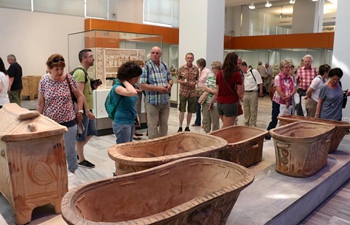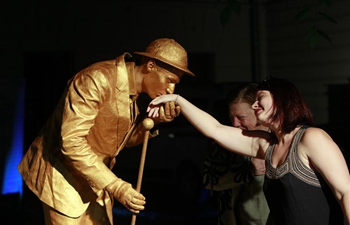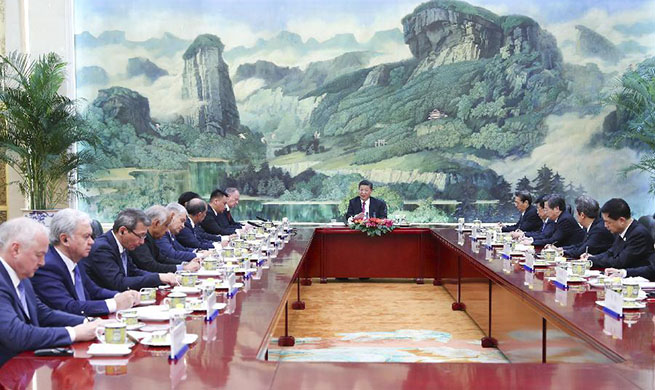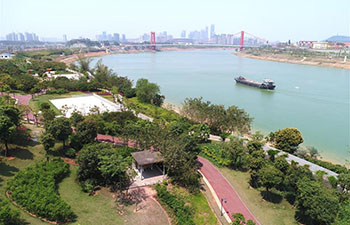BEIJING, May 23 (Xinhua) -- The Forbidden City is shaping a new image for itself after almost six centuries.
The imperial palace, also known as the Palace Museum, is expanding its appeal to the smartphone generation.
"I believe we are the best digital museum in the world," said museum curator Shan Jixiang at a press conference earlier this month.
Shan was referring to a digital exhibition which opened last October atop Duanmen Gate, the main entrance to the palace grounds.
Visitors may walk directly into the emperor's residence and, through VR, see everything as it was in its heyday, even to the extent of being able to talk with a senior minister with the help of artificial intelligence.
The Palace Museum houses close to 1.9 million antique items.
"A lot of the Palace is not accessible to the public, but through VR, nowhere is off-limits, even the Hall of Three Rarities, a 4.8-square-meter chamber where Emperor Qianlong of Qing Dynasty (1644-1911) housed his most treasured calligraphy," Shan told Xinhua.
The digital gallery at Duanmen opened in 2015, displaying items that are too old and fragile for real display, said Shan.
The "National Treasure" exhibition in February, the first in 2018, was immensely popular during the Lunar New Year holiday. Giant LED screens were set up in a square inside the complex, showing nine antiques from nine different museums across the country.
The exhibition was in conjunction with a China Central TV weekly show, also named "National Treasure", which was well received among viewers.
In March 2017, the museum released a documentary, "New Diary of the Forbidden City," about the restoration of the Hall of Mental Cultivation. The first two episodes have been seen over five million times on a popular streaming site.
"These documentaries help us understand and feel history," a viewer commented.
Digitalization of the museum started 20 years ago, when it established a center for information electronization. Starting 2001, the museum opened websites in Chinese and English, as well as a youth version.
Last March, the Palace Museum announced it would digitalize its entire collection and make the images available to the public. The museum photographs each item from different angles and uploads them online, according to Shan.
In February 2015, the museum launched an app to showcase its collection. The app highlights one item from the collection every day.
Nine apps have been released so far. One of them, named "Exhibitions at the Palace Museum," provides panoramic views of exhibition halls as well as detailed information of items on display. It gained over 500,000 downloads in 2017, Shan said.
This year, the museum released a mini program on WeChat, China's largest social media platform. Through GPS and realtime visitor statistics, the program advises visitors on the best route through the museum on a delicate "hand-painted" map.
Via the Internet, innovation and new technologies, the museum shares with the younger generation splendid traditional culture it embodies and represents, said Shan.

















